Books
Remembering John Ball, the Writer Who Gave Us Virgil Tibbs
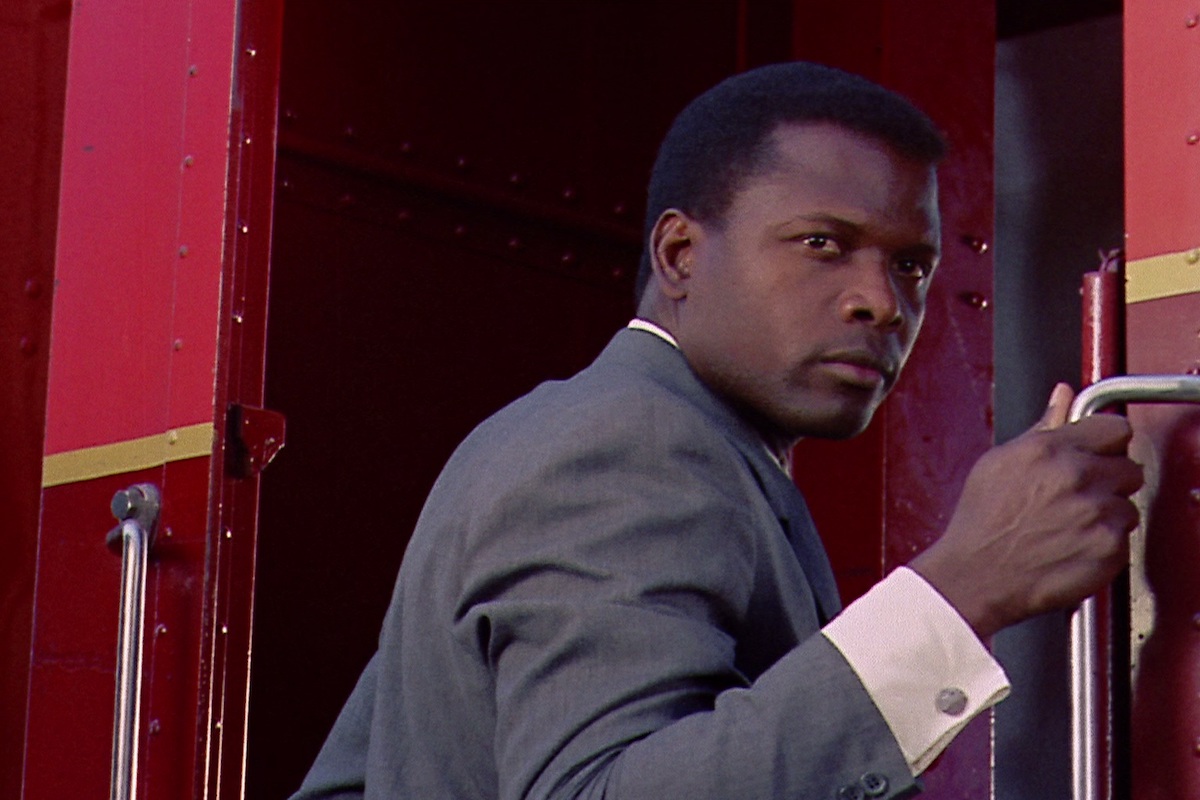
Sidney Poitier, who retired from acting 20 years ago, turned in many unforgettable screen performances over a career that spanned the entire second half of the 20th century. But his best known is almost certainly his portrayal of police officer Virgil Tibbs, the protagonist of Norman Jewison’s 1967 film In the Heat of the Night, one of the first films to impress the combined issues of policing and racism on popular culture. The film won five Academy Awards, including Best Picture, and the American Film Institute’s list of the 100 best movie lines of all time places Poitier’s “They call me Mister Tibbs!” at number 16 (right between “E.T., phone home.” and “Rosebud”).
As portrayed in the film, Tibbs is a Philadelphia detective who happens to be passing through a small Mississippi town when a murdered body is discovered by the police. A racist local cop goes to the station to see if anyone might be trying to hastily catch a train out of town. There he finds Tibbs who, after visiting his mother in the south, is waiting for a train to take him back north to Philadelphia. The cop, naturally, arrests Tibbs on suspicion of murder based solely on the fact that he is black and not from around the area. Tibbs, realizing the danger he is in, offers no resistance. When he arrives at the police station/jailhouse, Tibbs is questioned by Police Chief Bill Gillespie (Rod Steiger in an Oscar-winning performance). When the chief learns that Tibbs is a respected homicide detective from Philadelphia he reluctantly releases him and, even more reluctantly, allows him to help out in the murder investigation. Eventually Tibbs and the local cops solve the murder and gain a grudging respect for each other. The film is a powerful fable about the great things that can be achieved when blacks and whites set aside racial animosity and work together. It was a much-needed message back in late 1960s America, and it remains so today.
Poitier is rightly regarded as one of the greatest screen actors of all time and his performance as Virgil Tibbs may be his best. But the man who created Virgil Tibbs is barely remembered at all these days and, in his own way, he was nearly as much of a groundbreaker as Poitier. John Ball was the kind of writer who nowadays would probably be criticized by some for “not staying in his own lane,” as the popular phrase has it. Ball was a Caucasian but his most consequential contribution to American popular culture was the fictional African American protagonist of the 1965 novel upon which Jewison’s film is based. The novel was an immediate success, winning an Edgar Award for Best First Novel from the Mystery Writers of America in 1966, as well as a Gold Dagger Award from the Crime Writers Association of the United Kingdom for best non-British mystery. In addition to the famous film and its less-famous sequels, the novel also spawned a hit television series, starring Carroll O’Connor and Howard Rollins, which ran for seven seasons, comprising 145 episodes and four made-for-TV movies (poor health and other problems caused Rollins, who played Virgil Tibbs, to drop out of the series before the end of its run). The film and the TV series are well known. Less well known is the fact that Ball followed up the original novel with six very good sequels. He also published short stories about Tibbs in Ellery Queens Mystery Magazine.
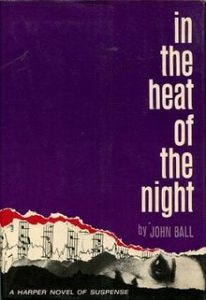
Fictional black detectives weren’t exactly unknown prior to the publication of In the Heat of the Night. African American author Chester Himes introduced his crime-fighting duo Coffin-Ed Johnson and Gravedigger Jones in a 1933 short story and began fleshing out their characters in a series of novels beginning with 1957’s For Love of Imabelle (later retitled A Rage in Harlem). But Coffin-Ed and Gravedigger engage in a great deal of illegal head-bashing and other violent acts. This was the case for a lot of mid-20th century pulp-fiction detective characters, both black and white, as the Golden Age of mystery fiction (epitomized by the works of Agatha Christie and Dorothy Sayers) gave way to the Brass Knuckle Age (epitomized by Mickey Spillane). What set Virgil Tibbs apart from most other fictional 1960s crime fighters was his sharp intellect (he is, not incidentally, a huge fan of Sherlock Holmes) and his relative pacifism (he never starts a fight, but he’ll finish one that someone else starts, using judo to minimize the damage to his opponent).
Virgil Tibbs is often contrasted with John Shaft, another fictional black crime fighter of the same era also created by a white novelist (Ernest Tidyman). Critics have occasionally compared the two characters to Civil Rights-era activists Martin Luther King, Jr. (Tibbs) and the more militant Malcolm X (Shaft). In the book Sticking It to The Man: Revolution and Counterculture in Pulp and Popular Fiction, 1950 to 1980, edited by Andrew Nette and Iain McIntyre, Tibbs is described as “nonthreatening yet subversive in the ways an educated black man can be… Tibbs is, in the best 1960s-era liberal sense of the word, a credit to his race… a man acutely aware that he must excel not only in his police work… but in his moral probity too. To the point of being corny, the Tibbs books present him as the honorable standard bearer.” Shaft, on the other hand, is something else entirely: “The name alone suggests a certain attitude paired with sexual innuendo. The words on the cover of the paperback edition [of the original 1971 novel] say it all: ‘Shaft has no prejudice, he’ll kill anyone—black or white.’ And Shaft doesn’t operate out of some genteel town with rolling, ivy-covered hills, he works out of an office near Times Square and has a pad in the Village, in one of the most dangerous and alive cities in the world, New York.”
Alas, by the late 60s, with the rise of the Black Panthers and other militant organizations, the patient scholarly black crime fighter began to become an anachronism. By the time the film They Call Me Mister Tibbs! was released in 1970 (a film not based on any John Ball novel), Tibbs was morphing into an action hero. The Wikipedia page on blacksploitation films listing the genre’s notable entries in chronological order places They Call Me Mister Tibbs! second above Cotton Comes to Harlem (based on a Chester Himes novel). The Wiki page notes that They Call Me Mister Tibbs! is stylistically different from its predecessor, which was decidedly not a blaxploitation film. The badass black crime fighter epitomized by John Shaft served an important role in filmdom, providing an antidote to years and years of films in which black men were portrayed as either subservient and timid or criminally violent. But it’s a shame that John Ball’s vision of Virgil Tibbs, which is essentially what you see in the film In the Heat of the Night, wasn’t allowed to thrive alongside all the badass black crime fighters of the blaxploitation era.
Curiously, one of the main differences between the film character of Virgil Tibbs and the book character, is their respective points of origin. In John Ball’s novel, Virgil Tibbs is identified as a police detective from Pasadena, California. In fact, his California origins seem to rile his southern “hosts” nearly as much as his skin color. At one point in the novel, Chief Gillespie refers to Tibbs as “the Sherlock of the Pacific.” And, indeed, John Ball’s Tibbs seems to radiate a certain southern California cool, a Zen-like ability to keep his head when those around him are losing theirs. I don’t know why Norman Jewison and his screenwriter Stirling Silliphant chose to alter their protagonist’s back story, but I suspect that they didn’t think Pasadena, an upscale and largely Caucasian southern California city, was gritty enough to be the home turf of a black cop. In the two sequels (in which Jewison and Silliphant had no involvement), Tibbs becomes a cop in San Francisco. Although this returns him to his California roots, it is nonetheless a long way from Pasadena.
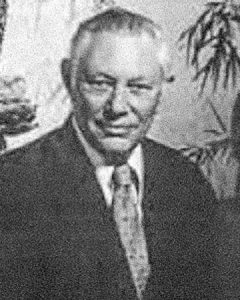
John Ball (1911–88)
John Ball led a fascinating life. When he died in 1988, his obituary in the New York Times read like the outline for a great adventure saga. He was born in Schenectady, New York, but grew up in Milwaukie, Wisconsin. After graduating from Carroll College in Waukesha, Wisconsin, he embarked on a career in journalism. He was a science writer on the staff of Fortune magazine in the 1930s. He became an assistant curator of the Hayden Planetarium and the director of public relations for the Institute of Aerospace Sciences. According to the Times, “He wrote liner notes for Columbia record albums, became a music critic for the Brooklyn Eagle in 1946, and left in 1951 to review records for the New York World-Telegram.” During World War II, Ball, who had a commercial pilot’s license, served as a navigator aboard various US Air Force planes. Specifically, he was part of a crew whose job was to fly warplanes “over the hump” from India into China, where they would be used to fight the Japanese. The “hump” was Air Force jargon for the Himalayas, the most imposing mountain chain in the world, and the most treacherous to cross via airplane.
He was in famous company. A Wikipedia page listing notable participants in the hump airlift includes such prominent figures as film producer Merian C. Cooper, who had co-directed the 1933 movie King Kong; Robert S. McNamara, who would become US Secretary of Defense in the 1960s; Ernest K. Gann, who would write many bestselling aviation-themed novels; Ted Stevens, who would become a long-serving US Senator from Alaska; Thomas Watson, who would succeed his father as the CEO of IBM; and movie star Gene Autry (apparently an acquaintance of Ball’s, because he is mentioned by name on the acknowledgements page of the third Virgil Tibbs mystery novel and even appears in said novel, playing a pivotal role in its outcome). Later in life, Ball served as a reserve deputy in the Los Angeles County Sheriff’s Department, and as a vice president of the Mystery Writers of America (as well as the president of its Los Angeles chapter). In 1960, he was admitted into the Baker Street Irregulars, a highly exclusive society of Sherlock Holmes enthusiasts. For what it’s worth, he was also a semi-professional magician and an ardent nudist (The Cool Cottontail, the second of Ball’s Virgil Tibbs mysteries takes Tibbs to a nudist colony).
Writing about African American characters wasn’t the only way in which John Ball veered out of his own lane. Apparently, his wartime service in Asia left a lasting impression on him. After the war he spent a lot of time in Japan, where he became fluent in the language and earned a black belt in aikido. As a writer, Ball combined his interest in African American lives with his interest in Asia by occasionally sending Virgil Tibbs off to exotic locales such as Nepal, Tibet, Hong Kong, and Singapore in some of the sequels to In the Heat of the Night. Even in that first novel, Ball worked in some of his love for Asia. Late in the story, Tibbs is revealed to be a practitioner of judo and briefly discusses the differences between various other Asian martial arts, such as karate and aikido, with a fellow police officer. None of this made it into the movie.
Ball also wove in a lot of musical talk—specifically about jazz and classical music—into his works. In the novel In the Heat of the Night, the murder victim is an Italian classical music conductor who was planning to establish a summer music festival in the small redneck town of Wells, South Carolina, where the action is set. In the film, the victim is just a rich white guy from Chicago who was planning to set up a factory in town, and the action has been moved to Sparta, Mississippi, presumably because, whether true or not, in the imagination of most Americans, the deeper you are in the south, the scarier it gets. In slave novels like Uncle Tom’s Cabin, no one wants to get “sold down the river,” because slavery was reputed to be more harsh and more brutal the further south you went along the Mississippi.
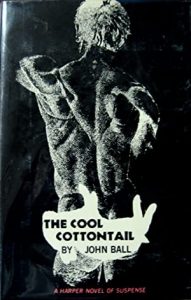
The Cool Cottontail tried to do for nudists what In the Heat of the Night did for black Americans—i.e., call attention to how unfairly society treats them. Naturally, the novel didn’t resonate nearly as powerfully with the American reading public as its predecessor did, since few Americans feel constrained by the laws that ban public nudity. In book three, Johnny Get Your Gun, Ball once again put the hostilities between black and white Americans front-and-center, although this time those hostilities play out in a relatively enlightened Southern California milieu. The novel was published in 1969 and written when the assassinations of Martin Luther King, Jr., (killed in April of 1968) and Robert F. Kennedy (June of 1968) were still fresh in the public consciousness. That freshness oozes from the pages of Ball’s novel. Young people reading the novel today might be surprised (and depressed) to learn just how long the scourge of gun violence has been plaguing the American landscape. The story concerns nine-year-old Johnny McGuire, who steals his father’s loaded revolver one afternoon in order to get back at a schoolyard bully who tormented him earlier that day. Instead of shooting his white schoolmate, Johnny, who is also white, ends up shooting a young African American man instead, triggering racial unrest. Here’s a passage that tells us what Tibbs (and, presumably, Ball) thinks about guns:
Guns, dammit, guns! The right to keep and bear arms was given when a raw young country was part of a great, wild, largely unknown continent. In crowded modern cities a loaded gun was as lethal as a pit viper, a machine for killing and nothing else. Killing. First there was Kennedy and the bitter, terrible reality of a presidential assassination. Then Martin Luther King. As a Negro Tibbs could never forget that one. Because King had been more than just a prominent public figure cut down; he had been the whole pride and hope of a long-suffering people, a man whose voice was listened to everywhere—and respected. The manhunt for his killer had been one of the most intensive in all history, but that did not bring King back, or his words, or give back to the Negro people their Nobel Prize winning peacemaker.
Then Robert Kennedy—three bullets from a small .22 had stopped his energy, his intensive drive, erased his victory over Eugene McCarthy, terminated in mid-flight his bid for the Presidency. One man, any man, could do it at any time.
When a black friend of the dead man tells Tibbs that he wants to kill young Johnny, Tibbs tells him that Johnny isn’t the one to blame. “Then who is?” the young man asks, and Tibbs tells him, “His father, for keeping a gun where he could find it. Some Washington lobbyist who fought firearms control. Some legislators who went along with him because he was a good fellow.”
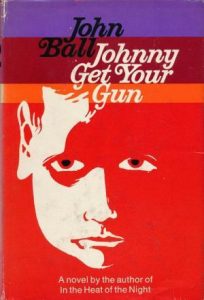
It’s difficult to imagine a more American novel than Johnny Get Your Gun (for the paperback edition, the title was changed to the nonsensical Death for a Playmate). Its elements include racial hostilities, gun violence, baseball, a trip to Disneyland, a struggling working-class family, and a Hollywood ending orchestrated by a real-life singing cowboy. (If Gene Autry—a conservative, white, multimillionaire—strikes you as an odd hero for a book about racial conflict, bear in mind that, back in the 1950s, to help inculcate morality in his young fans, he created The Cowboy Ten Commandments, the fifth of which reads: “The Cowboy must not advocate or possess racially or religiously intolerant ideas.”) It was the last Tibbs novel in which America’s racial divide was a major factor, although Tibbs himself would continue to have to deal with the occasional racist. Typical of a John Ball novel, music infuses the story. The murder victim is a promising young drummer. And Gene Autry, of course, was a famous singer (a talent that figures in the book’s climactic scene).
The Eyes of Buddha, the fifth book in the Virgil Tibbs series, marries many of the elements that were near and dear to Ball’s heart. The book, published in 1976, appears to have been inspired, at least partially, by the kidnapping of Patty Hearst (she was abducted by the Symbionese Liberation Army in 1974 and arrested by the cops in 1975). A very wealthy Pasadena couple, whose 22-year-old daughter disappeared a year earlier, are so desperate to find their child that they use their money and influence to have Virgil assigned to the case, even though it isn’t officially a homicide investigation. Amusingly, Virgil Tibbs lives in a world in which Norman Jewison’s adaptation of In the Heat of the Night has made him famous. In John Ball’s fictional world, the film is not based on a novel but on Tibbs’s actual exploits while visiting his mother in the south. Thus, in The Eyes of Buddha, Tibbs is frequently running into people who want to discuss the film with him. At one point, he is flirting with Marsha Briggs, an African American chanteuse at a Pasadena nightclub. When he tells her his name, she sneers, “Virgil Tibbs himself. I’m quite honored.” He asks if him being a policeman bothers her, to which she replies, “No, not a policeman. But you must admit that you don’t look very much like Sidney Poitier.”
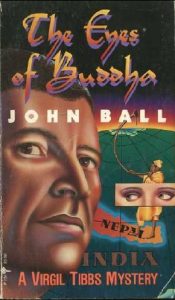
Tibbs’s partner on the homicide squad is Bob Nakamura, a Japanese American, which allows the two men to engage in a lot of racially tinted banter that, in the 1970s, would have played as harmless but which nowadays might strike some as offensive. And Ball gives Tibbs a steady girlfriend named Yumeko, the daughter of an African American serviceman and a Japanese mother who met in Japan shortly after World War II. This provides Ball with even more opportunities to muse upon Asian culture. Although most of the book takes place in Pasadena and its environs, some of the later chapters take Tibbs off to Hong Kong, Nepal, and Tibet (a part of the world he refers to as “the Orient,” which would be a no-no nowadays).
At one point, in order to better understand the young woman he is looking for, Tibbs asks her father, “Can you mention any motion pictures that she particularly liked?” He responds, “Yes, In the Heat of the Night.” When Tibbs asks for more titles, he mentions Love Is a Many Splendored Thing and Sayonara. He also mentions that she loves the novels of John Masters, a largely forgotten writer of adventures set in the East (specifically India) whom Tibbs and I (and presumably Ball) are also fond of. Her favorite musician, according to her father, is Ravi Shankar. From all this, Tibbs intuits (correctly, as it turns out) that young Doris Friedkin has snuck off to Asia, probably using a fake passport. When he finally locates her in a hippie commune in Kathmandu, her appearance has been drastically altered, she is employing a fake but convincing Australian accent, and she is using the alias Caroline Langford. But Tibbs realizes right away that Caroline Langford is really Doris Friedkin. How? As he explains: “When I learned that she particularly liked books about the Far East, I began to think about this immense part of the world. India became a focal point because she particularly read John Masters, and he is famous for his stories of India… He has done many famous books, but one of the best-known of all is Night Runners of Bengal. It deserves to be, it’s a tremendous piece of storytelling. I read it some time ago, but I still remember the name of his heroine. It was Caroline Langford.” Thus, the African American detective was able to track down the missing Jewish American heiress thanks to their mutual love of the Far East (and the novels of John Masters).
By this point in the series, Ball seems to be much more interested in Asia than in the lives of African Americans. But he does still try every now and then to remind his readers just how fraught life can be for a black man in a white man’s world. Here’s an example:
Because he could not help it—the habit was too deeply ingrained—memories came back to Virgil of a deprived boyhood in the Deep South, of the race riots, of the angry and hopelessly frustrated attempts of some God-beseeching Negro people to be allowed to eat at the bus station, of the violent deaths that had taken place. In Virgil Tibbs’s mind there came back yet once again the sight of his first victim of murder; a seventeen-year-old black youth who had died with an undelivered report card still in his pocket. He had spent most of his short life in classrooms, preparing himself for whatever kind of life he would be permitted to live. He had “shown promise.”
As he had bent over the body of that once living human being, in Virgil Tibbs’s adolescent mind there had been born the dedication that he would someday do something to punish cold-blooded, wanton murder. It had grown as a gradual thing, not forged in a furnace of blind hate, but it had endured. Now he sat at one of the choicest tables that the elegant room had to offer, dining with a young woman who was catching far more than her share of masculine eyes. And he was the homicide specialist of an important, modern organization that protected a major American city.
Later in the novel, when a beautiful young white woman lets Virgil know that she’s sexually available to him if he’s interested, Ball writes:
For a frozen moment images came flooding back and he was once more, despite himself, a small Negro boy in the Deep South listening to his father’s solemn, almost fearful advice, warning him about the terrible danger of white women. He had learned then, for the first time, that others had paid with their lives for even appearing to be interested in some white woman, no matter how slatternly. That day was now past, but it had been forcefully instilled into him that he would have to protect himself by every means since he would soon be old enough to come under suspicion. It had been that way and his father had done the right thing in warning his son.
The Eyes of Buddha, like all Virgil Tibbs novels, is full of musical references. When Tibbs first encounters Marsha Briggs it is at a nightclub where she is singing jazz standards such as Blue Prelude and The Man I Love. Elsewhere we find references to Ravel, Debussy, and other classical composers. Sometimes Ball goes to ridiculous lengths to shoehorn a musical reference into his police procedurals, as in this brief exchange between Virgil and his boss:
“None of this is at all funny,” Chief McGowan said, “but I am reminded of the famous catalogue aria in Don Giovanni.”
“The parallel is apt, sir,” Tibbs agreed. “As a matter of fact, I had the same thought.”
In the fictional world of John Ball, even hardboiled Irish American police chiefs have an encyclopedic knowledge of classical music. A catalogue aria, according to Wikipedia, is “a genre of opera aria in which the singer recounts a list of information.” Ball’s final few Virgil Tibbs novels are full of catalogue arias pertaining to music and Asia. The references to African-American culture in these novels are, by contrast, more like plainsong, monophonic chants without much feeling.
In Sticking It to The Man, an expanded edition of which was published in 2020, the chapter on Virgil Tibbs notes that, “Unlike the nefarious reputation of the Los Angeles Police Department just over the city line, there’s little hint of racism or corruption within the ranks of the more bucolically portrayed Pasadena PD. It seems unlikely that Tibbs might someday come into conflict with his bosses over a questionable shooting or deadly choke hold of a black suspect.” This might have been true of Ball’s fictional Pasadena PD but, alas, it is far from true of the genuine article. If Tibbs were around today, he would weep to see what has become of his former place of employment. In just the last decade or so, officers of the Pasadena PD have engaged in numerous controversial shootings involving racial minorities.
In 2009, Leroy Barnes, Jr., an African American, was shot 11 times by two Pasadena cops during a traffic stop. The details of the shooting provided by the police have been disputed. The police claimed the fatal shooting occurred outside the car. An investigation proved that Barnes was shot inside his vehicle. In 2012, 19-year-old African American Kendrec McDade was shot dead by two white Pasadena police officers who mistakenly thought he was the armed robber they were seeking. Like Virgil Tibbs in In the Heat of the Night, McDade was suspected merely because he was nearby when the crime occurred and because he was black. In 2016, Reginald Thomas, Jr., a 35-year-old African American father of eight was killed in his apartment by a Pasadena police officer who used a taser on him. Without acknowledging any wrongdoing by its officers, the city of Pasadena paid Thomas’s family $1.5 million to settle a wrongful death suit. The list goes on and on.
Back in the mid-20th century, Pasadena was viewed as a sleepy bedroom community populated largely by wealthy widows—the stereotypical little old ladies from Pasadena, who were a cultural trope even before Jan and Dean memorialized them in a 1964 pop song that reached number three on the Billboard Hot 100 Chart. Presumably these wealthy widows were the wives of men who had made a fortune in Los Angeles (in oil, or banking, or some other industry) before retiring to the suburbs and expiring of a heart attack. But not every Pasadenan fit this stereotype. Curiously, Pasadena had more African American citizens back in Virgil Tibbs’s heyday of the 1960s and 1970s than it does now. According to census figures, about 16 percent of Pasadenans were black in 1970. Thanks to skyrocketing house prices, by 2010 the figure was down to 10.6 percent. Pasadena is now home to film stars such as Meryl Streep and Kristen Wiig, and its median property costs 184 percent that of the national average. Likewise, transportation prices are 31 percent higher than the national average and grocery prices are 12 percent higher.
As African Americans have been priced out of Virgil Tibbs’s hometown, police violence against them has increased. John Ball might have been pleased to discover that the city’s Asian American population has grown considerably since 1970, but he would certainly be discouraged by the fact that In the Heat of the Night, a portrait of the dangerous relations between white cops and black citizens, could now be transplanted from Wells, South Carolina (or Sparta, Mississippi), to Pasadena, California, without anyone having to rewrite much except for the descriptions of the landscape and the Southern accents.
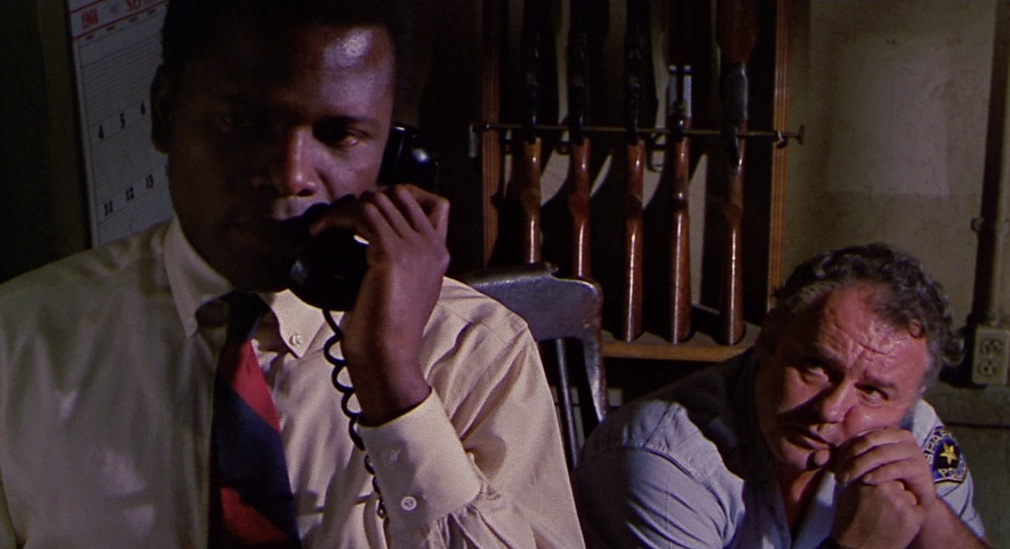
In times of violent racial turmoil, social justice activists might prefer a violent man of action like John Shaft than what you’d get from a thoughtful pacifist like Virgil Tibbs. For what it’s worth, Ernest Tidyman’s John Shaft novels, like so many other genre fictions of their era, are now out of print (though available electronically) and (unlike the Shaft films) largely forgotten. John Ball’s In the Heat of the Night hasn’t suffered the same fate. In 2015, Penguin Classics released a 50th anniversary edition that contained a (not entirely uncritical) appreciation written by African American novelist and screenwriter (12 Years a Slave) John Ridley. Here’s how Ridley concludes his introduction to the novel:
It’s praiseworthy that Ball believed one man could so elevate the world around him. Had he not, literature wouldn’t have been blessed with such a resonant take on southern justice or the likes of Virgil Tibbs. What an individual could not undo, In the Heat of the Night and its many iterations chipped away at over many generations. The novel’s cultural density endures by way of an award-winning film, two film sequels, six follow-up novels, a long-running television series, and one of the most memorable lines ever uttered in the history of cinema: “They call me Mr. Tibbs.” This, then, is where it began—a sliver of a book, and one that has had more lasting impact than works many times its size. It is a landmark among expressions of racial justice that retains its power today.





